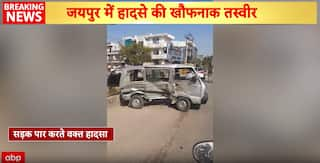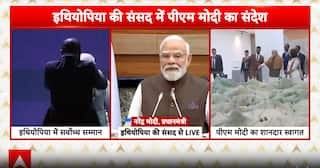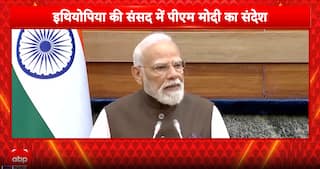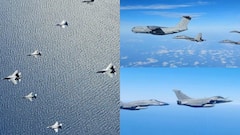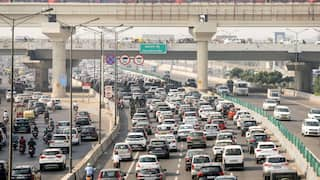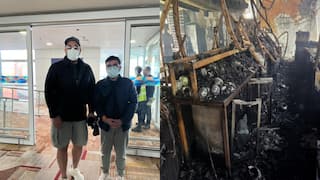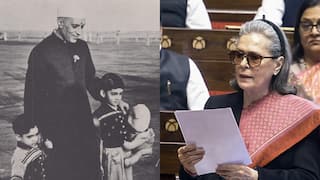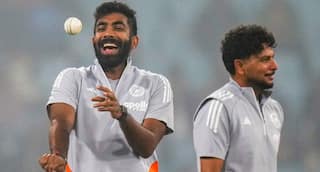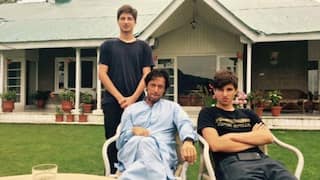Gen Naravane Interview: The Best Way To Ensure Peace Is To Be Prepared For War, Ex-Army Chief Says
General MM Naravane (Retd), the former Chief Of Army Staff, says India has to be war-ready in order to maintain peace in the region, and that we have no option but to create theatre commands. Read his exclusive interview to ABP Live.

New Delhi: General MM Naravane (Retd), the former Indian Army Chief, has a clear roadmap drawn out on how India’s national security apparatus should look like in the coming decades even as the world is undergoing a geopolitical and a geostrategic shift. With a growing superpower like China in the neighbourhood and ties between New Delhi and Beijing plummeting, India has to be war-ready in order to maintain peace in the region, he says.
In an exclusive interaction with ABP Live, Naravane, under whose tenure (December 2019-April 2022) the India-China border clash soared in an unprecedented manner in 2020 and eventually led to the Galwan incident in which 20 Indian soldiers were martyred, says India has no option but to create theatre commands. Edited excerpts:
Q: Should we be prepared for a war with China? Will it not be a repeat of 1962?
The best way to ensure peace is to be prepared for war. We have put in so much in our Northern borders, especially in Ladakh and in the Central sector, in the East, in Tawang, Arunachal where we were always strong. The number of forces there have been beefed up, the infrastructure has been created, the road network has come up - all these have made us quite strong. We are capable enough now to face China.
What objective does China have? What does the PLA wish to achieve by going to war? Is it to capture Tawang? Not possible. Suppose the game-plan is to capture Tawang, we have three layers of defences in Tawang. It is not 1962 where there was only one brigade guarding that whole area. Now there are two divisions. Against two divisions he will have to get six divisions. Our weaponry is also equally modern. It is not that we are fighting with WWII vintage weapons. There will be heavy costs to pay for any military mis-adventure undertaken by China.
People keep talking of '62. I believe '62 was not a military failure. It was not a military defeat, but a politico-military defeat. Wherever there were clear orders, units and formations acquitted themselves most exceptionally. They fought till the last man, the last round. Units acquitted themselves most professionally, nothing to be ashamed of. But they were given wrong orders in panic. They were told to "withdraw". Now if you withdraw from prepared defences and then get caught in the open, it's not your fault. It is the fault of the person who gave the order to withdraw.
Q: What is your assessment of the situation at the Line of Actual Control (LAC) at the moment?
Eastern Ladakh is certainly live now. There are two-three areas in Arunachal and Sikkim also where they keep coming and clashes happen. In North Sikkim also there is one place where similar kinds of fisticuffs happen, in Tawang area - Yangtse also these kinds of incidents happen. Rest of Arunachal Pradesh, or RALP as we call it, there also their patrols come but it is so vast that the chances of clashes are less. There are five to six disputed and sensitive areas, where these kinds of incidents occur.
Q: Is our weaponry modern enough to face China?
Our weaponry is modern. Lots of new inductions have taken place not only in the basics such as artillery and rifles but even in the force multipliers - rocket forces, cyber systems, electronic warfare systems and so on. And, whatever we read of China, we should take it with a pinch of salt. That is also part of the IW (information warfare). Every week they showcase a new weapon system, how do you know if that is all real?
At the end of the day, you still have to put boots on the ground. No matter how much IW you do, no matter how high-tech, no matter how many drones, no matter how many aircraft, you still have to come and sit on that piece of land before you can claim it as your own. That fact of life is not changing. You have to dislodge me from there and that dislodging is not going to be easy.
We no longer shy away from naming China now. The External Affairs Minister (S. Jaishankar) has said so many times that relations with China cannot be normal until Ladakh is normalised. I think keeping things slightly vague out of diffidence is not there anymore. Now we very much take China's name and that they are a primary challenge because of the unsettled nature of the border. But I do believe that settling the border question is not impossible, provided there is a political will on both sides, especially from the Chinese side to resolve the border problem. That will only benefit them.
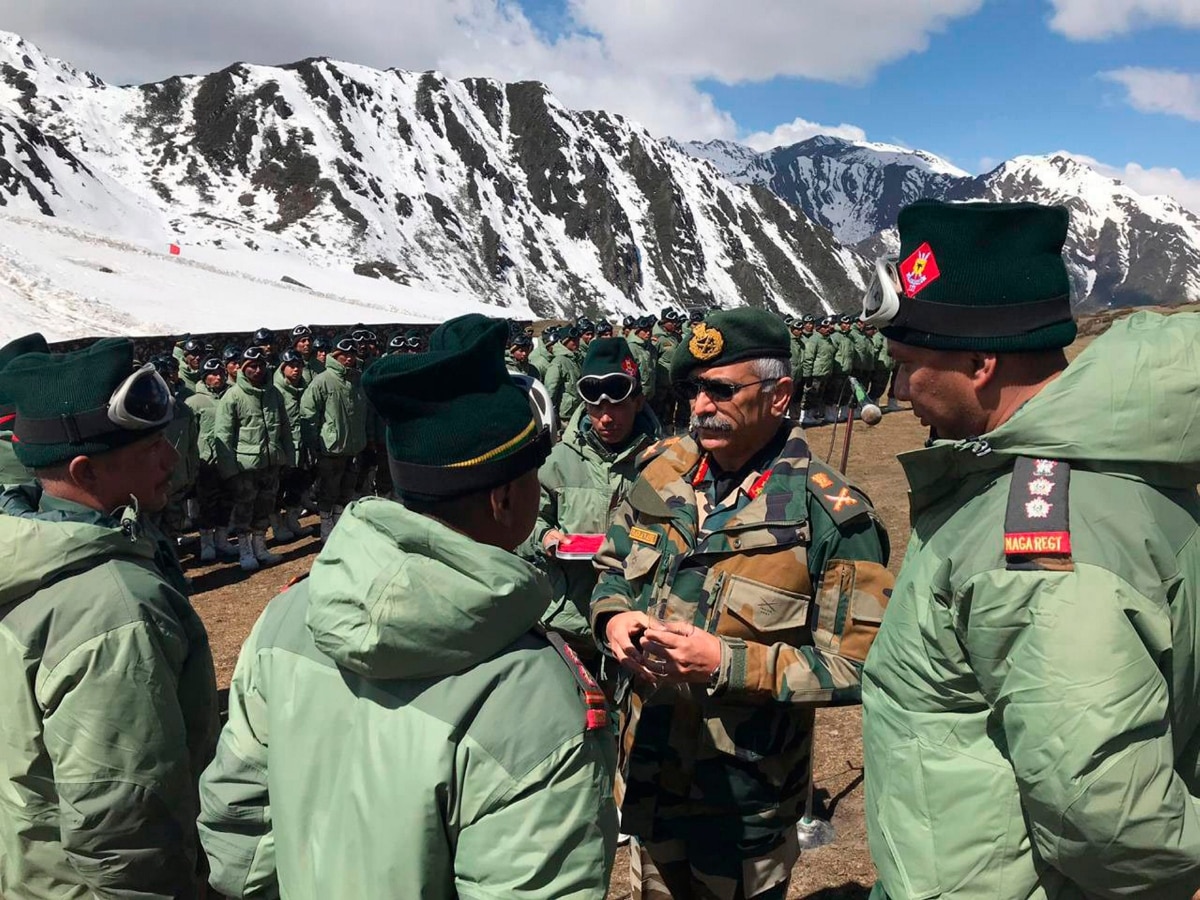
Q: What are the chances of a Galwan-like clash happening again?
The risk of a Galwan-like clash still remains because they are violating established protocols. We have a number of protocols and agreements. We have the BPTA (Border Peace and Tranquillity Agreement), we have protocols on Confidence Building measures (CBMs) and all these protocols were laid down, including what has to be done in the case of a face-off. We have what is called a ‘banner drill’ wherein when you come face to face you show a warning banner from a stand-off distance to avoid a physical confrontation. Now all that has gone out of the window.
Q: What happened exactly that night in Galwan?
There was too much of a melee. In a melee like that, especially at night, it's not possible to distinguish friend from foe. But subsequently, in the other areas, when we occupied the Kailash Ranges, then they were trying to do the counteraction - that time we said this kind of coming in a mass will not be acceptable and we did open fire. They were banking on the clause (of one of the border protocol agreements) that fire will not be opened and then they were coming in increasingly large numbers, thinking there will be no firing and they will overpower us with strength. I have said then also when I was in service that the numbers are not important. We lost 20 boys, including Col. Babu. It's a sad thing that happened but we had given back in good measure.
I don't want to get into the numbers game. What is important here is that for the first time they suffered casualties. All along what they have been doing is that they will come in, push and shove in and try to gain little advantage here, one height there, at no cost.
For the first time, they have suffered costs. And that is what has now changed the whole equation and now they will not try this again. Because now they know next time also, they will suffer costs much heavier than what they have suffered now. It is the same tactic they follow in the South China Sea. They do small incremental actions. Each action itself is not worthy of a response but when you add up all those actions it becomes a big thing.
Q: So is that the reason why both the forces are standing eyeball-to-eyeball?
It is no longer eyeball-to-eyeball anywhere. We were eyeball-to-eyeball in the friction points like in PP-15, PP-17, North Bank, South Bank, Kailash Ranges, but that disengagement has happened. Demchok and Depsang are legacy issues that predate 2020. Initially, the PLA were keener on de-escalation, wherein majority of the forces will go back and they will continue to occupy their positions. But after we got control of the Kailash Ranges and turned the table on them, they changed their tune to disengagement. They realised we are also sitting in an advantageous position.
Q: But if they want disengagement then why are they pushing in more PLA troops in that area?
Let them. We have enough to counter that. My view is, have we not imposed costs on them? This means now they fear us. Earlier they did not fear us thinking we will not do anything. When we went in and secured the Kailash Ranges, they realised that we are now not averse to taking offensive action. Now they have realised that they can be at the receiving end which is why they are putting in more troops.
Actually, it is a feather in our cap that we have forced them to deploy. Is it not a cost to them? And to maintain those in Tibet everything has to come from mainland China, which is 3,000 km away. For us to maintain our troops in Ladakh it only has to come from 300-500 kms away. Who's better off? We are.
ALSO READ | INS Vikrant: Aiming To Position India As ‘Preferred’ Security Partner In Indo-Pacific
Q: How much infrastructure have we stepped up? It seems we are still lagging behind China?
We have stepped up infrastructure there. Yes, we are lagging behind because we were going as per our long-term plan. We are a democracy and we have to follow the procedures. If we have to build a road, we have to get an environmental clearance. We have to take forest clearance and these people may not understand the national security ramifications. It's not that we did not have an infrastructure development plan. We very much have a plan in place. We know what is required to be done. But because we are a democracy it will take its own time, unless there is an emergency where certain waivers can be given. Because of this Ladakh standoff, what we were going to do in five years, we built in five months. Everything went into emergency mode.
Q: Coming to the debate around creation of theatre commands — is this any idea whose time has come?
We have to go for theaterisation, there is no doubt about it. There is no right time to change. We have to formulate what we want our theatres to be, what they should look like and more importantly, what is the aim for that theatre. Once we know what is the aim for that theatre, only then we will be able to assign forces or compose it accordingly. We have to make a concrete proposal and give it to the government. That is taking a little bit of time. So, hopefully the Chief of Defence Staff (Gen. Anil Chauhan) will be able to present something in the near future.
Q: How will the theatre commands shape up and operate in the Indian context?
At the conceptual level we are saying that there should be one theatre for one front. Let us take for Pakistan, where we have the Northern Command, the Western Command, the South-Western Command and the Southern Command - all four commands are looking at one adversary and each have their plans of what they will do in times of war. Of course, their plans are known to the Army HQ but that's not the way to go.
The idea is to integrate all these commands into one front. So, there will be one theatre looking into the Western front. Similarly, one theatre looking after the Northern front and one looking after the maritime affairs. And maybe one or two functional / administrative theatres looking after all the areas left in the middle. So, one border should be allocated to one theatre and the hinterlands will be under a different theatre, who can coordinate the administrative issues, but no operational role, except perhaps for internal security duties.
Q: But such a transition will require a complete mindset change?
We need to understand that this has to be done for operational reasons. That has to be the baseline. It is not for the turf of a particular service. It is not for more ranks. This should result in better efficiency to prosecute military operations. Once we do this whole transition, the operational chain would go from the Theatre Commander to the Chiefs of Staff Committee in our context, and in times to come, to the CDS.
The Service Chiefs will only have the raise, train and sustain functions. They become like administrative chiefs. With many armies in the world, it is like this – Australia, Philippines and South Africa and many others. In the US concept, the Theatre Commanders report directly to the Secretary of Defence (Raksha Mantri in our case). Finally, there will be two parallel channels - one will be an administrative channel and one will be an operational channel.
Q: So, when will we begin work in that direction?
We have to start the process. When China started this process of theatre commands in the early 2000s, they had nine military regions. Now China has come down to five theatre commands - North, East, West, South and Central. It fructified just a few years ago. From ideation to actual execution of the plan it was a decade-long process. The whole transition will take a decade. We need to make the plan now, then start regrouping and reallocating unit formations and resources, in a gradual manner giving shape to the structure.
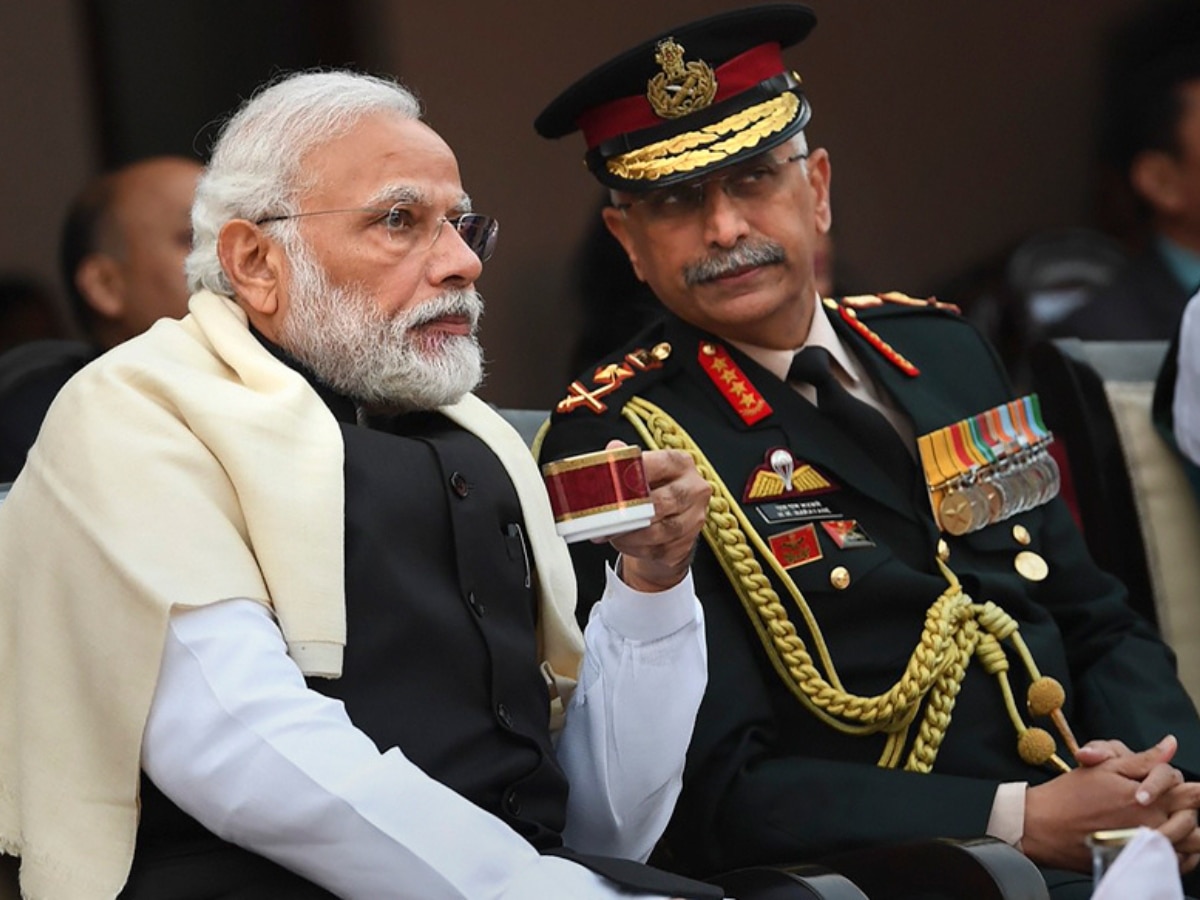
Q: China or Pakistan — which is a bigger threat for India?
If you see the bigger picture, definitely our greater worry is China rather than Pakistan. It is not that it is a bigger worry now, it has been so for a long time. In fact, it was Mr. George Fernandes, when he was the Defence Minister, who had said that China is India's Number 1 threat. It's not that China became a number one threat only in the last two years. It has always been the Number 1 threat but it has not been said in so many words in the past. It was more under the surface. We understood two decades back that China will be a long-term threat. That time the Pakistan threat also was quite alive, especially what was going on in J&K. Proxy war was at its height in J&K. We knew a China threat existed but in the short-term we were preoccupied with Pakistan. But as time has progressed and today with what is happening in Pakistan, we have been able to focus more on another front.
Definitely, today Pakistan is a lesser threat and I feel that if you prepare for a bigger threat then the lesser threat will automatically be taken care of. Your strategy is also based on your capability. So, we are faced with two borders, both of which are unsettled, and two adversaries. Against Pakistan we had a punitive deterrence, that is if they try to do something you need to hammer them and against China, we only had a dissuasive posture, basically dissuading them from doing anything.
But, now with China we are in a deterrent posture. Now we have sent them the message that we are strong enough and now we are not going to be at the receiving end. So, with China it is a clear shift now from dissuasion to deterrence. But at any point of time there will always be multiple threats. We all know there is a threat from the West and there is a threat from the North. Threats and relative priorities can keep changing. With the changes that we have brought about in the Northern front, we have gone into a strong deterrent posture.
Q: How do you assess the Pakistan threat vis-a-vis Kashmir? Do you think the Kashmir problem is really settled?
Pakistan has always tried to paint the situation in Kashmir as a homegrown insurgency. But the fact that no insurgency can survive without external support is historically proven. So as long as they keep supporting that, these little disturbances will keep happening. There was a period when it was at its peak but it is declining, however sporadic acts of violence will continue. They have terrorists on their soil. Where will they go?
They keep sending them across otherwise they will attack the Pakistani establishment. They are riding the tiger and now they can't get off. This insurgency will keep playing out for some more time till such time they realise that their strategy of "death by thousand cuts" is not working. It has not worked for 20 years; how will it work now? They might as well realise that peace with India has greater dividends for them.
They have now got a greater problem on their Western front. From a purely strategic point of view and as a military option it would be in their interest to keep this front (India) quiet. This is one of the reasons why they agreed to renew the ceasefire in 2021 February. This J&K issue, we can keep talking about it as rhetoric. In their heart of hearts, they know that everything is where it is and nothing is going to change. Moreover, even the local population of Kashmir doesn't want PoK back. They look at them with disdain. They don't want any reunification to happen.
Q: So, you mean to say cross-border terrorism is a lesser challenge now?
It has reduced considerably. That is why there is this talk of even scaling down the Rashtriya Rifles because the situation has improved in the hinterland. We don't require so many troops there anymore. Though the LC has to be manned in strength but in the hinterland definitely a drawdown is possible. It doesn't have to happen in one go, it can be done gradually. That is why we could move the Uniform Force to Ladakh because that area which was under them was relatively dormant.
Q: How important is it to hold the elections there now?
Elections are definitely needed because at the end of the day we are a democracy. And also, the development has to be visible. Development is not happening. And this has to happen not just in the urban areas but in the rural areas also. Development should be such that they impact the day-to-day activities and quality of life improves.
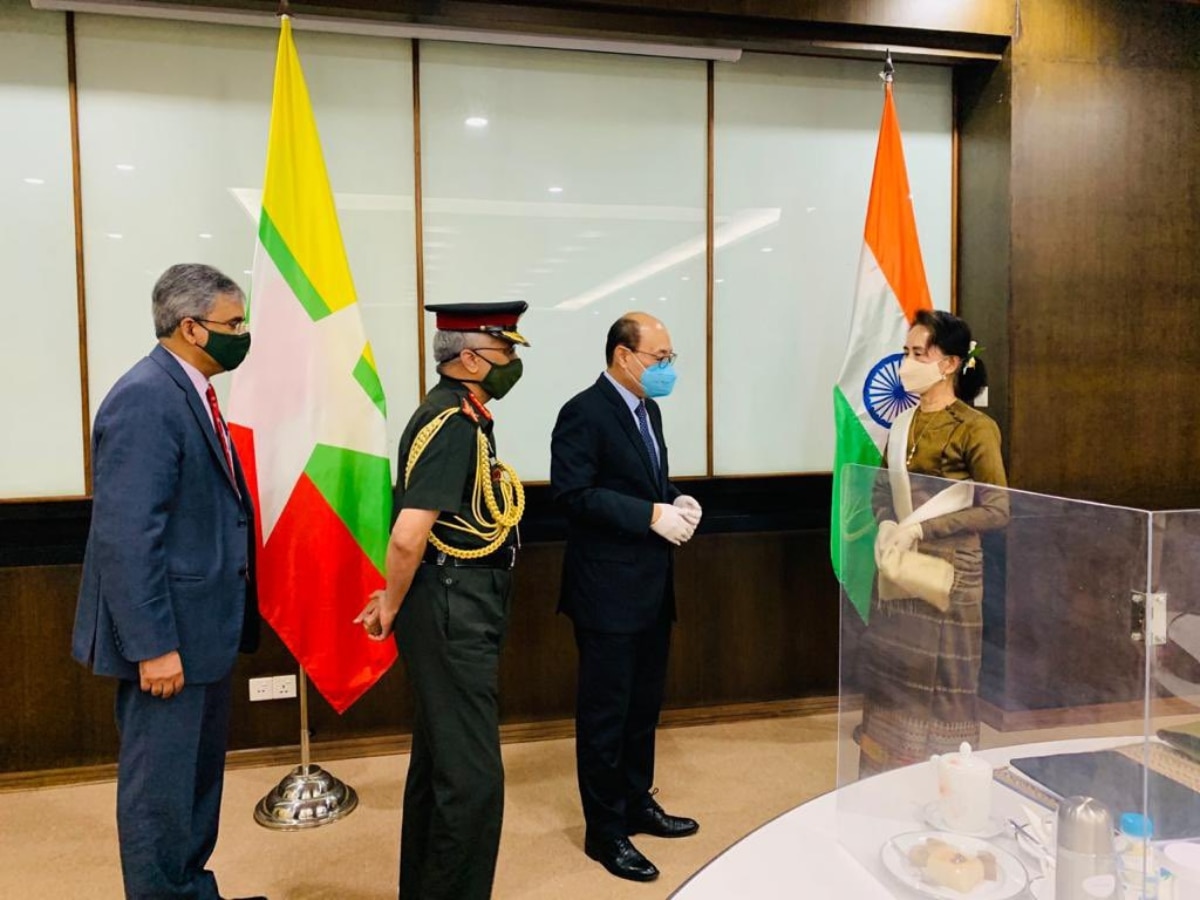
Q: Under your tenure military diplomacy got a major push and subsequently joint exercises with other countries gained momentum. How will these moves help?
When we have to progress relations with any country, we should employ all the facets of our national power - the DIME (Diplomacy, Information, Military and Economy) paradigm.
Diplomacy is of course paramount, but the military aspect can be equally important to further your relations with various countries. Within military relations too there is a whole gamut of activities that can be undertaken, which ranges from the individual level i.e. exchange of students for courses between our friendly foreign countries, in our case, through the ITEC programme, undertaken not only by officers but also soldiers. Then you have delegation level visits, including what we call as SMEEs - Subject Matter Expert Exchanges.
From the professional point of view, everybody has a core competence. So, when you have joint exercises, you actually learn from each other as you are not always the best in everything. We put our best foot forward but then the aim is to share best-practices. And of course, interoperability increases. We built mutual confidence and faith in each other. The fact that you are doing joint exercises means you trust each other. The complexity and the intensity also show how deep is your relationship with that country. If a joint exercise with a country takes place at a platoon level means it is still at a fledgling stage. Whereas if it's an exercise involving one or more services then it means you are deeply engaged with that country. From single service exercises we are now graduating to bi-service and in due course to tri-service exercises.
When we have to do our planning for all possible threats and how we will deal with various contingencies; we have to be very sure that we do so on the basis of what capabilities we have. We cannot do our planning based on what may or may not come. If something comes, that will be a bonus. But we cannot count on it and neither should we expect it. We cannot pre-suppose that just because you do joint exercises with a country, that country will invariably come to help you in case you face a war-like situation. Nobody will come and spill blood for you. That's not going to happen.
Q: What about the modernisation plan? Is it being done as is desired by the forces?
Modernisation is going on. We have floated a number of new proposals including bigger platforms like the Future Ready Combat Vehicle (FRCV) incorporating all the latest technologies. We are even looking at unmanned ground vehicles (UGVs) . The Navy is also going in for unmanned naval systems, basically, underwater systems. All three Services are looking at drones and counter-drone systems. With the private sector coming and not only depending on defence PSUs, the pace of that modernisation is going to improve. They will deliver. For them it is about building long-term trust factors. Therefore, capability development is happening, and it has to be a continuous process.
Q: Make-in-India drive in defence sector — how feasible is it?
We have Tatas, L&T, Mahindra, Bharat Forge, Adani to name just a few who have stepped into the defence arena, and we also have several defence firms, MSMEs, feeding them. So, there is nothing we cannot make.
Yes, there are some niche technologies which we are lacking in. One is of course, aircraft engines, which is the heart of the aircraft - France has offered, GE recently offered to make the engines in India. So, we have to go for the indigenous development and now that we know where our deficiencies lie, we can focus on those. We will improve over time. Everything has a development cycle. One more advantage of indigenous development is that now we do not have to take permission from OEMs for product improvement. If it is our own product, we can do it as and when required.
Q: Chinese President Xi Jinping is now promoting his idea ‘Global Security Initiative’ after the Belt-and-Road Initiative. Should India be concerned?
Answer: This is a new initiative. But the old one - BRI - has failed. We will have to wait and see if they can integrate the two. But there is not denying the fact that China is looking to become a global player. Xi’s visit to Moscow can be a game-changer, if he is able to broker a deal between Russia and Ukraine, even if it is only a temporary suspension of operations and getting them both to the negotiating table. If that happens it will mean China has arrived on the global stage. China is competing against the US, not India. We must also be very clear about that. For them we are the lesser threat and the US is the greater threat.
Q: India's clear alignment towards the US, will that complicate ties with China further in the coming years and decades?
China will definitely look at whatever we do with suspicion. They do feel that we are moving closer to the western bloc. But the stance that we've taken on issues like the Ukraine war shows that we will do what we think is right for us and not necessarily blindly follow some path which has been propagated by the West or US-led. We will be pragmatic and realistic in whatever we are doing.
Q: What lessons should India learn from the Russia-Ukraine War?
Wars will happen is the first and foremost lesson. There was a feeling creeping in, especially at the policy making levels that wars are passé, that wars will not happen. While we do not wish for a war, the only way to avoid a war is to prepare for it. You may say that you do not want a war, but how can you legislate so for your adversary? Capabilities take time to develop. They cannot be developed overnight. So, you have to keep allocating adequate funds for the defence of the country.
Other lessons will be at the operational and tactical level and there the real truth will come out when the dust settles. At this moment it is only IW.
The deliveries of S-400 from Russia are going on as scheduled. They have stuck to whatever was the delivery schedule. That means they are not badly off. If they really were in dire straits, they would have first stopped exports. The fact that they are still exporting S-400 to us means they don't need it in Ukraine or that they have enough. This also indicates that they have deep pockets, and they are ready to go on for as long as required. It is the western inventory that is depleting. Time is right for better sense to prevail. At least have a cessation of hostilities even if you don't want to call it a ceasefire.











